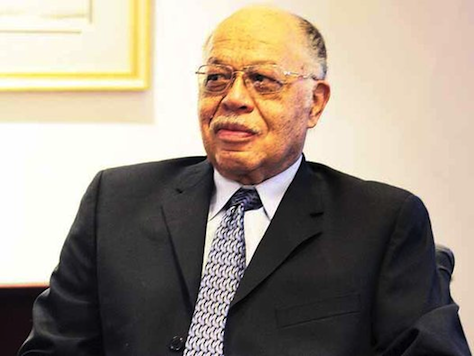Pennsylvania prosecuting attorney for the Department of State Juan Ruiz decided to close a civil malpractice lawsuit against Kermit Gosnall despite evidence of neglect, including leaving fetal parts in the woman.
Gosnell was required to tell the State Board of Medicine (the Board) about any malpractice lawsuits against him when he renewed his medical license. Dana Haynes filed one in November 2008 after she suffered injuries from an abortion on November 11, 2006. The details Haynes gave the grand jury would make anyone queasy:
The lawsuit was brought by Dana Haynes, who had gone to Gosnell for an abortion on November 11, 2006. The complaint alleged that Gosnell had performed the abortion in a reckless manner, tearing Haynes’s cervix, uterus, and bowel. It asserted that after performing the botched abortion, Gosnell failed to call an ambulance and, instead, kept her waiting at the clinic for four hours, bleeding and in severe pain. Haynes accused Gosnell of placing her life in jeopardy in order to cover up his negligence.
The complaint stated that Haynes bled extensively for a long time and had to be hospitalized. At the hospital, doctors discovered that Gosnell had not completed the abortion and had left fetal parts inside Haynes. Her injuries required extensive surgery.
Ruiz closed the case on April 20, 2009 after only reviewing the complaint, and said a pattern of conduct did not exist in this case. He told the grand jury he investigated the complaint, a dubious claim at best. The grand jury testimony revealed numerous incidents between 1979-2009, including the death of Semika Shaw and mistreatment of “Alice.” The National Abortion Federation (NAF) reported that five women before Haynes sued Gosnell for perforating their uteruses.
When confronted with this information Ruiz claimed he did not have access to the appropriate database. But the NAF’s database is specifically designed for state boards of medicine so they can quickly find any medical provider “who engage in unprofessional behavior.” But even without the database, the grand jury pointed out. Ruiz had access to his own department’s records. Those records would have told him about Shaw, Alice, and former employee Marcella Stanley Chuong’s inside information about Gosnell.
Ruiz told the grand jury “it was unfortunate that Haynes’ attorney did not lay out all of the facts in that complaint.” But the complaint itself specifically states Gosnell made Haynes wait four hours before calling an ambulance. Nonetheless, Ruiz never interviewed Haynes, apparently — the only investigator to interview Haynes was Sherilyn Gillespie after the February 2010 raid. She told Gillespie her cousins came to pick her up at 8PM, but were not allowed inside for four hours.
Finally, sometime after midnight, the cousins threatened to call the police if they were not allowed into the building. A clinic employee then told them to wait a minute and eventually admitted them. Once inside, the cousins declined the worker’s request that they wait to speak to Gosnell and demanded to see Ms. Haynes. The worker escorted them to the back of the building where they found Ms. Haynes by herself, lying on a recliner, with no supervision, no monitoring equipment, and no pants. She was covered with a throw blanket and there was blood on the floor around her. She was slumped over and was completely unresponsive when they tried to arouse her.
Ruiz is one of many that allowed Gosnell to continue his “medical” practice. For some reason, only known to him, he did not feel that the Haynes case was enough to prosecute Gosnell.

COMMENTS
Please let us know if you're having issues with commenting.